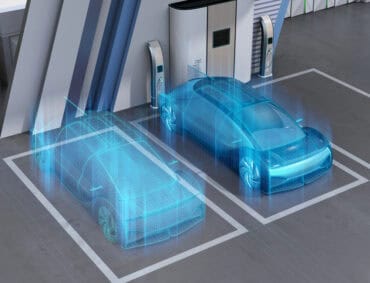
The pressure on EV makers to bring more models with more complex technology to market faster requires increasingly sophisticated design software, digital twin technology, and modern manufacturing practices.
There’s no doubt electric vehicles (EVs) have disrupted the auto industry. But that disruption is not only in obvious ways. The biggest impacts are the wide variety of different models automakers have to produce to meet customer demands and how much the time from concept to getting a vehicle into a customer’s hands has shrunk.
The days of taking six to seven years to bring new car models of any type to market are over. Such a schedule is not nearly fast enough to keep pace with changing customer preferences and market conditions. Electric vehicles compound this issue in a couple of ways, making matters even more challenging for manufacturers.
For instance, a change in how tax credits for certain new EV purchases are calculated can shift demand from one class of vehicle to another. A slight change in customer concern about greenhouse gas emissions in one country may drive automakers in that country to develop new EV options.
The impact of these issues is reflected in the recent EV market. In 2023, the number of available models for electric cars increased 15% year-on-year to nearly 590 as carmakers scaled up their EV plans to satisfy growing consumer demand. Those numbers come from the International Energy Agency (IEA). To put that change into perspective, the IEA notes that the number of internal combustion engine (ICE) models (including hybrids) declined for the fourth consecutive year, at an average of 2%. The agency also noted that the number of new electric car models could reach 1,000 by 2028.
Design and development speed is essential in the EV market
Not only do EV manufacturers have to develop many more models, but they must also compress the entire design and development time due to increased competition and fast-changing customer and market preferences. The old standard of about six years to bring a car to market is now down to five, and with the growing pressures from Asia-Pacific EV makers, it is likely to get even more compressed.
And there’s more. Typically, EVs incorporate leading-edge technologies, and their software systems are much more complex than ICEs. That makes development and testing, all of which must be done in shorter time periods, all the more challenging.
What’s needed?
Given this confluence of factors, EV makers need to embrace modern design and manufacturing practices.
While the auto industry (like aviation) was an early user of computer-aided design (CAD), computational fluid dynamics (CFD), and other software to design and test the mechanical and aerodynamic properties of their vehicles, they now need more. Specifically, there is a great need for more sophisticated design software and simulations that help engineers understand how all the components of an EV work together.
Many are turning to digital twin technology that allows designers and engineers to create and test vehicle components in a virtual environment before physical prototypes are built and assembled and software is created and tested. This speeds up the iteration process, reduces costs, and allows for more experiments.
Furthermore, EV automakers can leverage digital twin technology to customize vehicles according to customer preferences by simulating different configurations and their impacts on performance. This allows for innovative designs, which is exactly what the market needs.









